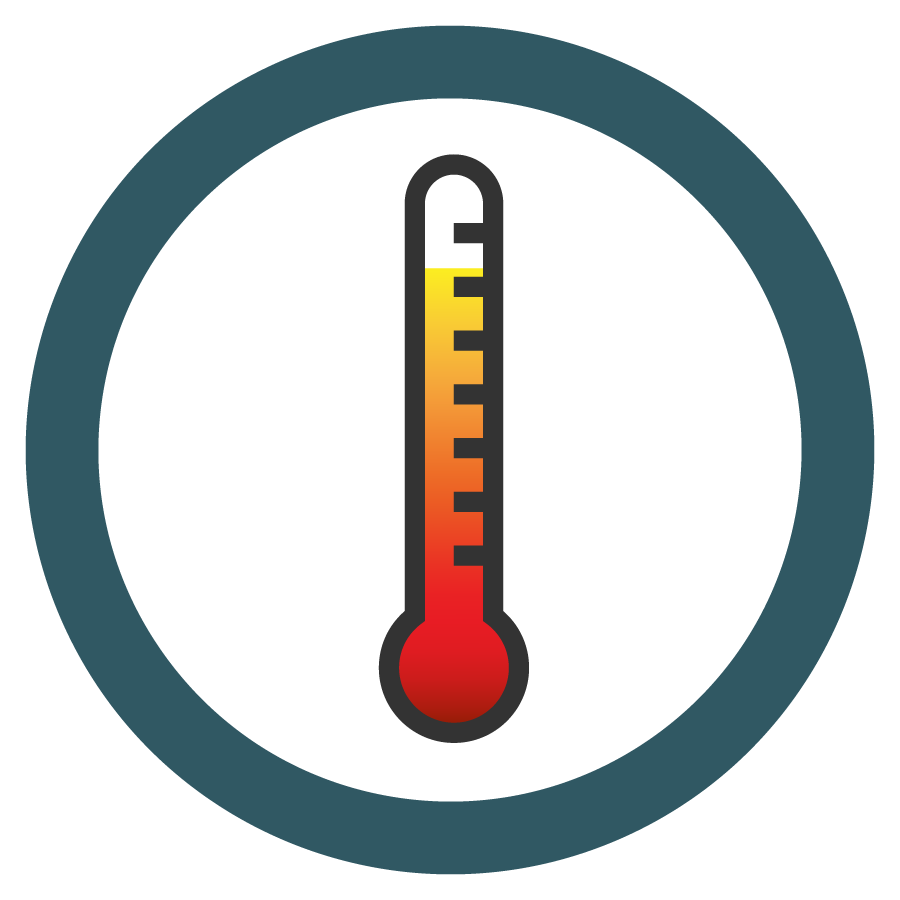(Please Note: These pages from the new Climageddon book. There are many more serious global warming consequences than those listed below. You will find the complete list in the Climageddon book.
Increased heat 
Human-caused carbon and methane pollution of the atmosphere from the burning of fossil fuels causes global warming. This carbon and methane pollution process traps more of the sun’s solar energy in the form of heat inside our atmosphere. This increased atmospheric heat means more heat waves and many more 100+-degree days annually. During the growing season, having more than 10 days with 100+-degree temperatures is catastrophic for many of the world’s five key food staples(corn, wheat, rice, soybeans, potatoes).
In many of the warmer climates, regular temperatures of 46° to 51° Celsius (115° to 125° degrees Fahrenheit) will become commonplace. During the hottest summer days in some traditionally hot places, temperatures could rise as high as 71° Celsius (160° Fahrenheit) within just decades.
What we are not talking about here are the large-scale changes to our atmosphere, seasons, weather, and environment that happen normally over thousands of years. These large-scale changes are now happening over frighteningly shorter time periods, such as decades!
It's important to understand how increasing heat will affect us personally. For instance, for every degree of Celsius temperature increase, global food production will drop 10% in many southern areas. Meanwhile the human population will continue to soar toward 9 billion.
As we approach 2° Celsius (3.6° Fahrenheit) of global warming-caused heat increase, 1.5 billion people will be exposed to heat waves each year. At a 3° Celsius (5.4° Fahrenheit) increase, the number of heat wave exposures triples to 4.5 billion. At a 5° Celsius (9° Fahrenheit) increase, 6 billion people will be exposed. Click hereto see a 30-second animation called Earth's Long-Term Warming Trend, 1880-2015.
Droughts 
Droughts are due to increased heat and reduced moisture over prolonged periods of time. There will be an increased probability and intensity of droughts. As the climate warms, experts estimate drought conditions may increase by 66 percent. Severe droughts are expected in Europe, but Africa will receive the worst of it. Less rainfall is also likely in mid-latitude and subtropical arid and semi-arid regions. For more information, read "California's Drought Could Continue for Centuries."
Desertification
Desertification (the process of greener areas turning into deserts) is also caused by the increased long-term heat of global warming. It is aggravated by soil and vegetation loss. Semi-arid and sub-humid areas will likely endure a future of almost irreversible barrenness caused by global warming’sevapotranspiration and the accompanying decrease in rainfall. For more background information, read “95% of Glaciers in Tibetan Plateau Have Receded.”
Fires and wildfires 
The potential for more fires of every kind rises dramatically as the heat of escalating global warming turns forests around the world into kindling. Fueled by the ever-increasing, long-term heat drying out the land, the Earth will experience endless wildfires increasing in magnitude and frequency with each degree of temperature increase. For more information, read “Wildfires: A Symptom of Climate Change.”
Jet stream disruption 
Shifting jet streams will act to significantly change long-established weather patterns. This is already being witnessed in many areas of the world where the normal rains, snowfall, and seasonal temperatures are becoming more unpredictable and atypical
In what may sound like a paradox, global warming will also produce cold waves in some areas due to changing location of jet streams and ocean currents. In some areas, winter storms have already become more frequent and intense.
At a 4° Celsius (7.2° Fahrenheit) increase, the atmospheric circulation of our jet streams is significantly affected. Jet streams commonly found in the mid latitudes are predicted to shift polewards by 1 or 2 degrees latitude in both hemispheres. For more background information or examples, click here to read "'Arctic amplification' to blame for Greenland's ice melt."
Shrinking sea ice and ice shelves
As average global temperature rises, temperatures will rise almost twice as fast in the world’s northernmost and polar regions. Because of this, our ice caps are also melting at an unprecedented rate. For more information, seethis video on the disappearance of Arctic sea ice and this visualization of Arctic ice melt over the past 25 years.
If the ice shelves on Greenland and Antarctica melt, sea levels could become more than 10-20 feet higher (3-6 meters) in 2100 than they are today. This would flood low-lying areas such as New York City's Lower Manhattan, Miami, and Bangladesh. This sea level rise would also be perilous for many low-elevation countries and inhabited islands.
Additionally, melting sea ice sheets also disrupt oceanic circulation patterns because they are made of fresh water, and fresh water is less dense than salt water. Because of the impact of melting fresh water on the Atlantic’s meridional overturning circulation pattern, Europe may become colder. (This meridional overturning circulation drives cold saltwater into the deep ocean while drawing warm water up and northward.) As the ocean currents change, they also can contribute to the shifting of jet streams and the altering of normal storm patterns.
As soon as a 2° Celsius (3.6° Fahrenheit) increase is reached, the extent of Arctic sea ice in September falls by 43% compared to long-term averages. At a 4° Celsius (7.2° Fahrenheit) increase, the Arctic would be nearly ice-free in summer. This could occur as early as 2035-2050. Rising sea levels will displace up to 350 million people, making the Middle East’s 21st century refugee crisis seem insignificant by comparison. For more information, read “Historical Data Shows Arctic Melt of Last Two Decades is ‘Unprecedented’.”
Shrinking glaciers and snowpack 
The glaciers around the world are shrinking because of the increasing heat due to global warming. In the U.S., Montana’s Glacier National Park has deteriorated over the last seven decades from 150 to just 35 glaciers.
With the approaching 2° Celsius (3.6° Fahrenheit) heat increase, glaciers will decline in global volume by as much as 55%, and snow cover in the northern hemisphere will decrease by 7%. (This excludes those on the Greenland and Antarctic ice sheets and on Antarctica’s periphery.) At 4° Celsius (7.2° Fahrenheit) of heat increase, glaciers decline in global volume by as much as 85%, and snow cover in the northern hemisphere decreases by 25%.
Once most of the white sea ice, glaciers, and white snowpack melts, there is another serious consequence lurking in our dark future. The white of the glaciers and the snowpack helps reflect the heat of the sunlight back into space (thealbedo effect). This helps to cool the Earth.
But if the glaciers, ice caps, and snowpack melt, the only heat reflector left for sunlight is the ocean. The ocean, unfortunately, is much darker than white ice and snow. Darker colors do not reflect the sunlight’s heat; they absorb it, further warming the Earth in another self-reinforcing loop of ever-increasing heat. For more information, read “Crisis On High.”
Melting tundra and permafrost 
The Arctic is warming twice as fast as the rest of the world. This warming in the far north can create another vicious, self-reinforcing cycle andpositive feedback loop. This methane is 25-100 times more powerful as a global-warming greenhouse gas than carbon dioxide from fossil fuel burning.
When considering the methane problem, do not forget that the increasing methane releases from fracking and big agribusiness are dangerous on their own. However, when adding in new methane releases from loss of tundra and permafrost, this multiplying factor of methane versus carbon must once again be factored in. With methane 25 to 100 times more powerful than carbon, rising methane pollution may soon become as problematic as carbon. For more information, seehere.
There are 12 more serious consequences described in the new Climageddon book. The following illustration lists them out without their full descriptions like above.
More from the new Climageddon book:
If you want to know what to do to prepare for the consequences, click here.
There is far more information about the escalating warming emergency in the new Climageddon book. Get your copy now! Your book purchase helps support the social benefit mission of Job One for Humanity to end global warming.

